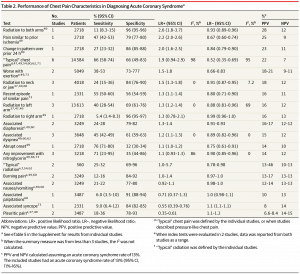

Stable angina pectoris is a chronic and mostly progressive disease. Symptoms are exacerbated by increasing the level of exertion ( i.e increasing the myocardial load), and vice versa. Stable angina pectoris: Symptoms appear primarily during exercise or other situations with increased myocardial load.Traditionally, coronary artery disease has been classified into the following three syndromes: Traditional classification of coronary artery disease These terms refer to symptomatic coronary atherosclerosis. Ischemic heart disease, coronary heart disease (CAD) and coronary artery disease (CHD) are synonyms. Hence, this chapter will present the most recent evidence and recommendations for the evaluation and treatment of chronic coronary syndromes (CCS).

Moreover, the guideline committee included representatives from North America, making it very likely that the coming guidelines by the American Heart Association (AHA) and American College of Cardiology (ACC) will be in line with the European guidelines. The new guidelines are based on data derived from studies conducted mainly in North America and Europe. For example, exercise stress testing is no longer recommended in the initial evaluation of patients with suspected coronary artery disease (i.e CCS). Moreover, prognostication, selection of diagnostic tests, and treatment strategies have been updated.

This syndrome includes six clinical manifestations of coronary artery disease (discussed below). Recent guidelines issued by the European Society for Cardiology (ESC) suggest a new classification ( Knuuti et al, 2019/2020), in which stable coronary artery disease is part of the broader syndrome of chronic coronary syndromes (CCS). The hallmark of stable coronary artery disease is exercise-related angina pectoris ( chest pain) symptoms of ischemia appear during circumstances with increased myocardial demand, typically exercise. Stable coronary artery disease (CAD), frequently referred to as stable angina pectoris, has traditionally been defined and managed as a distinct clinical entity. Evaluation and management of stable coronary artery disease Chronic coronary syndromes (CCS)


 0 kommentar(er)
0 kommentar(er)
